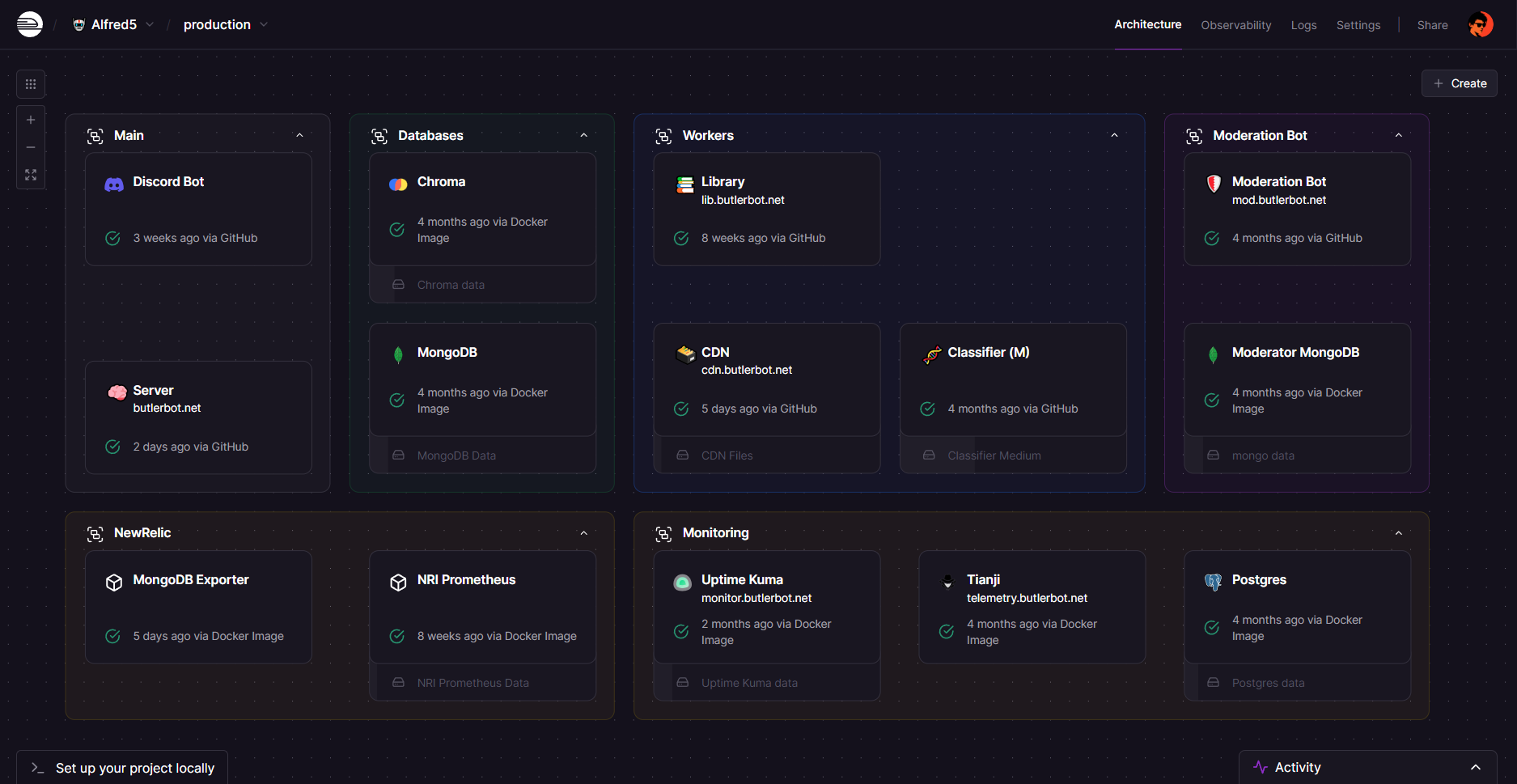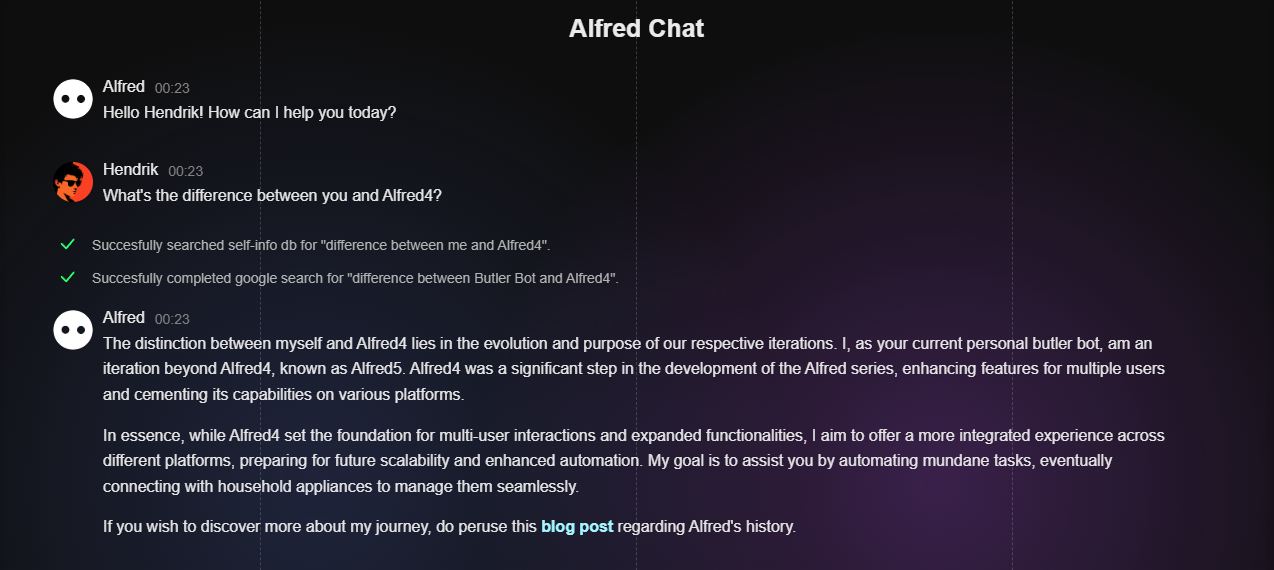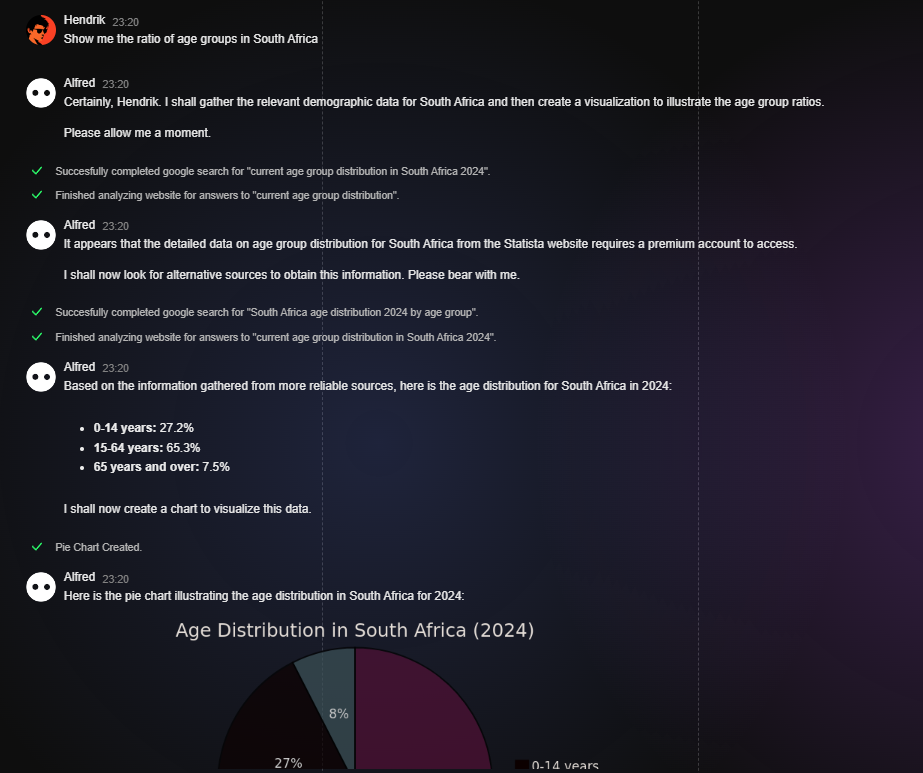Alfred5 - Bigger and Better
The Butterfly that is Alfred
There's a very important point in any project's life where it goes from being in a conceptual cacoon to breaking out and spreading its wings into a vibrant reality. I believe Alfred, my longest lasting project, just reached this point. If you don't know what Alfred is then I'd recommend reading this blog post where I talk about Alfred's history and goals. That blog post was made almost a year ago and since then I've been working on Alfred5 and today I'll be telling you all about it!
Truth is, I finished Alfred5 three months ago. Alfred5 released officially April 27th but since Alfred5 was such a monumental milestone for Alfred's journey, I put off writing this blog post- waiting for a time where I've grown to contain the vocabulary necassery to explain my excitement. I realized now, however, that such a time will likely never come. Alfred5 is truly an extremely important waypoint for Alfred's journey. Why you may ask? Let me show you.

The Importance of this Butterfly
It's hard to put the difference of scale between Alfred5 and Alfred4 into words. So instead, I'll just show you!
Here's Alfred4's dashboard on Railway:

and…
This is Alfred5's dashboard:

I'm sure you don't need to me to tell you that Alfred5 is in a different league from any previous Alfred version. Alfred5 is like Alfred4 except bigger, better and just a bit bolder. Alfred5 does what Alfred4 does but on another level.
In fact, I'll let Alfred5 explain the difference:

You may notice this screenshot is not from Discord and that's because it's not! Alfred5 comes fully packed with its own website. Alfred4 technically had web integrations too, although those were only utility endpoints that served only to make it easier for users to share their timezone and such with Alfred. Alfred5 however is fully independant from any third-party platform. Meaning, unlike Alfred4, you can use Alfred5 without even having a Discord account.
Ultimately, we're one step closer to Alfred's ultimate goal:

This was said by Alfred3 almost 2 years ago, I've been working hard making Alfred's wishes reality.
Of course you can still log-in with your Discord account on Alfred to use Alfred on discord. The only difference is now you can use Alfred independently from Disocrd. Alfred's website also comes with many neat features of its own, like the ability for Alfred to create Excel spreadsheets and to build inline applications via HTML, CSS and JS.
Let's go into the meat and potatoes of this though. Here's what Alfred5 can do!
The Abilities of this Butterfly
Apart from the before-mentioned abilities. Alfred can do the following:
- Google Search: Alfred can browse the internet and find up to date and accurate information from it.
- Analyze Websites: Alfred can read through articles and websites to give you in depth information on the contents of websites. Useful when paired with Google Search.
- Manipulate Memory: Alfred has a persistent memory, he can store long term and short term memories and recall these memories at later dates.
- View Images: Alfred can, naturally, also view images. This is useful when transcribing information, like asking Alfred to tablize a diagram.
- Generate Graphs: Alfred can generate many different types of graphs and diagrams for you, like pie charts, or entity relationship diagrams.
- Run Code: Alfred can run code, this is useful for complex operations or mathematical questions. Like asking Alfred to sort data or to calculate something complicated.
- Set Reminders: Alfred can remind you on Discord about anything. These reminders can be set from the website as well. You can also specify where Alfred should remind you!
Alfred5 can also support many different types of AI, like AnthropicAI, OpenAI and GoogleAI. Although GoogleAI has been removed temporarily and will be added back once it reaches Alfred5's standards. Alfred5 also supports any platform of course and a desktop / mobile app is planned!
Alfred's many functions are useful on their own, and even more useful when combined, here's an example:

The Appearance of this Butterfly
Alfred5 went through quite the metamorphosis from being in a caccoon to waking up as a beautiful butterfly. As such Alfred's appearance has changed a lot! Alfred's branding used to be old-timy. The reason for this is because I wanted Alfred to appear as a traditional butler. Although Alfred5 being as advanced as it is - I decided to put Alfred through a bit of a rebrand. Alfred's new branding involves an extremely simple robotic face with a modern minimilistic design.
The die hard fans of Alfred has shown a lot of distaste towards this change initially. Although I feel this change is necassery and shows how Alfred matured. The simplicity is meant to reflect the simplicity of using Alfred. The old timy fashion doesn't fit within my views for Alfred anymore since I don't want Alfred to represent the past but to represent the future.
The Destination for this Butterfly
Remember, the goal for Alfred5- as I mentioned in my previous blog post, is to make Alfred more flexibile in terms of where it can run. Alfred now follows a more clustered and microservice-like structure, which allows me to improve aspects of Alfred indepedently and makes Alfred more flexible in general. I'm hoping I don't have to make an Alfred6 and that I can just keep building upon Alfred5.
I'm considering making a robot body for Alfred in some point in the future. We'll see how that goes! Remember you can check Alfred5's new website out here: ButlerBot.net
Read More

